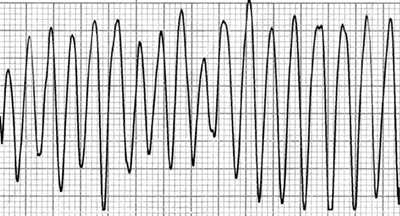



Ventricular Flutter


Ventricular Fibrillation

Ventricular Fibrillation and Asystole

Ventricular Flutter


Ventricular Flutter

Ventricular Flutter (SVT -> Ventricular Flutter -> Ventricular Fibrillation)


Ventricular Fibrillation
Sources
Ventricular Flutter
|

|
ECG and Ventricular Flutter
|

|

|

Ventricular Flutter
|

|

Ventricular Fibrillation
|

Ventricular Fibrillation and Asystole

Ventricular Flutter

|
Ventricular Flutter
|

|

Ventricular Flutter (SVT -> Ventricular Flutter -> Ventricular Fibrillation)

|
Ventricular Fibrillation
|

|
Sources